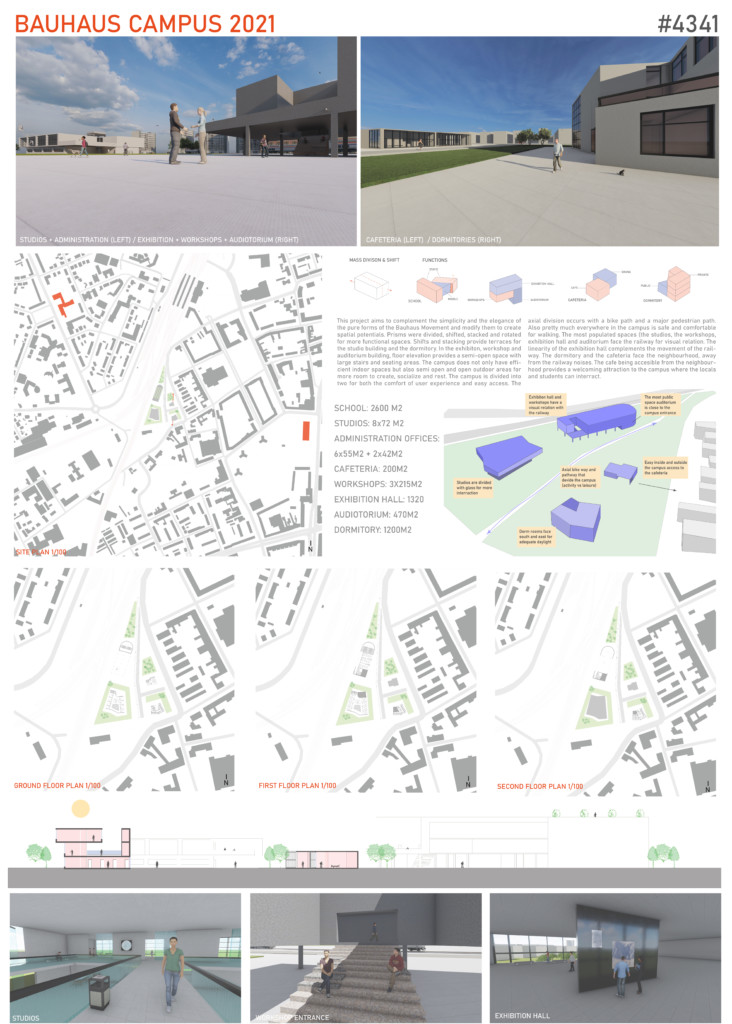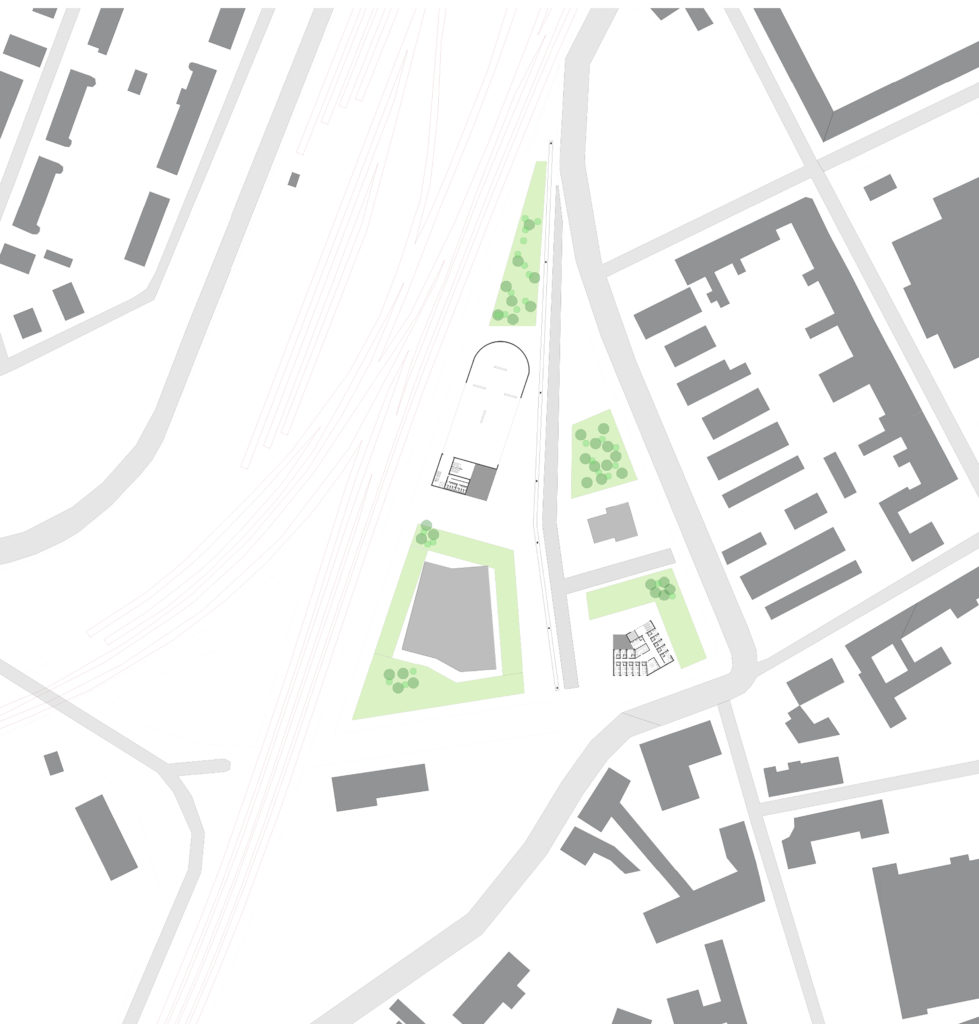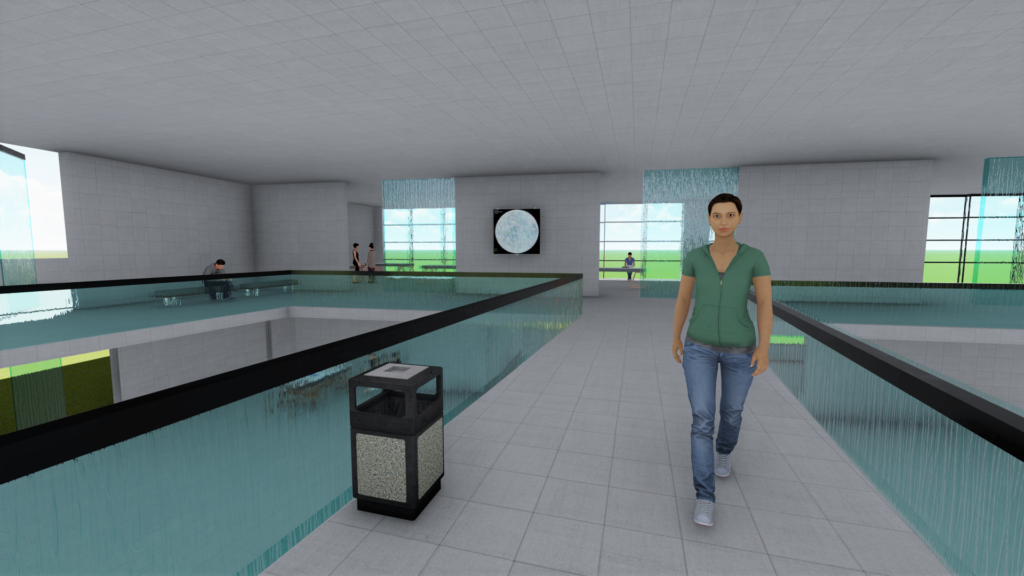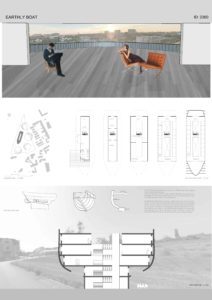This project aims to complement the simplicity and the elegance of the pure forms of Bauhaus Movement and modify them to create spatial potentials. Prisms were divided, shifted, stacked and rotated for more functional spaces. The shifts provide terraces for the studio building and the dormitory. In the exhibition hall, workshop and auditorium building, floor elevation provides a semi-open space with large stairs and seating areas. The campus does not only have efficient indoor spaces but also semi open and open outdoor areas for more room to create, socialize and rest. The campus is divided into two for both the comfort of user experience and easy access. The axial division occurs with a bike path and a major pedestrian path. Also, pretty much everywhere in the campus is safe and comfortable for walking. The most populated spaces (the studios, the workshops, exhibition hall and auditorium face the railway or visual relation. The linearity of the exhibition hall complements the movement of the railway. The dormitory and the cafeteria face the neighbourhood away from the railway noises. The café being accessible from the neighbourhood provides a welcoming attraction to the campus where the locals and students can interact.
- Exhibition hall and workshops have visual relation with the railway.
- The most public space, auditorium is close to the campus entrance.
- Easy inside and outside the campus access to the cafeteria.
- Axial bikeway and pathway divide the campus as activity and leisure functions.
- Dorm rooms face south and east for adequate daylight.
- Studios are divided with glass for interaction.














